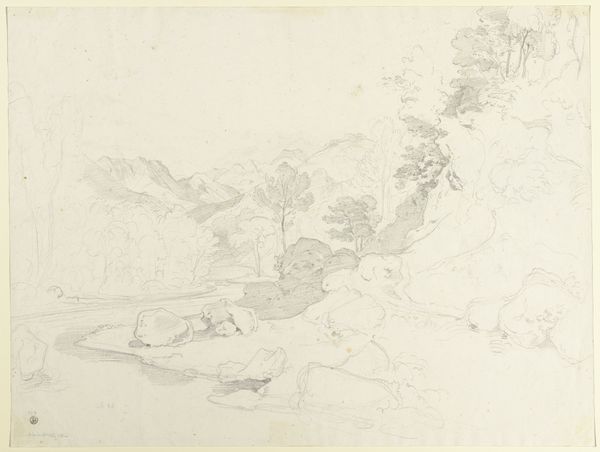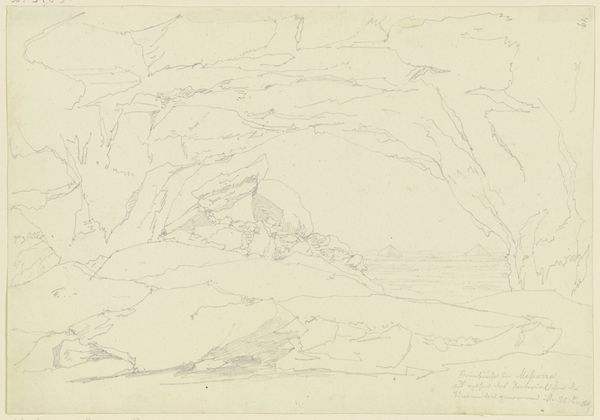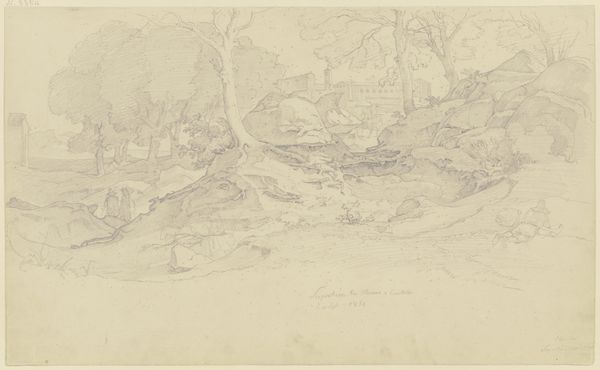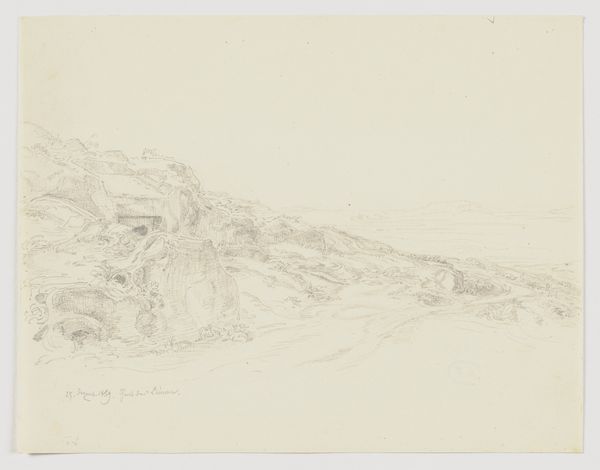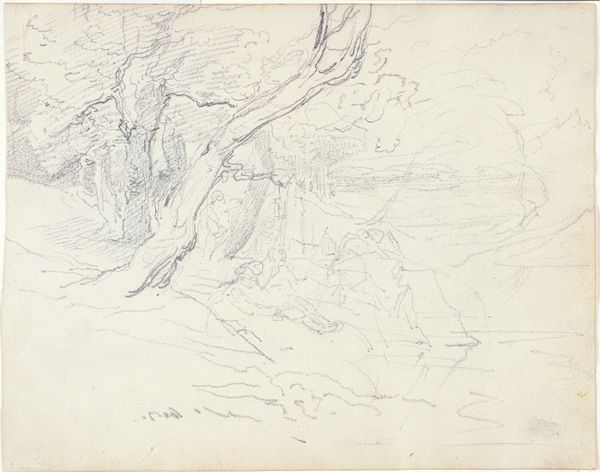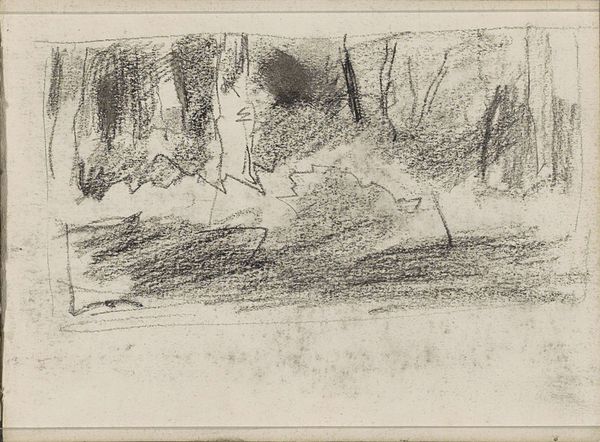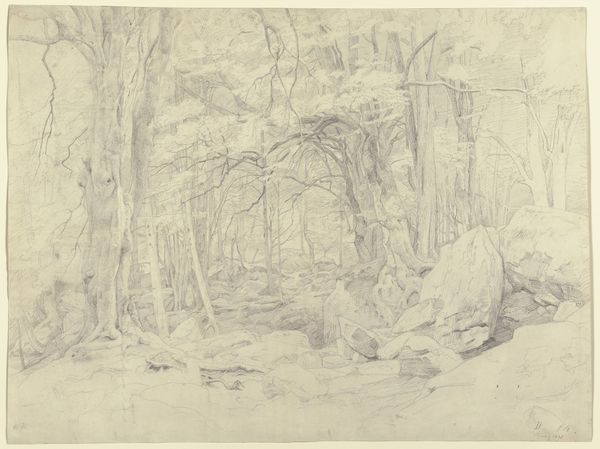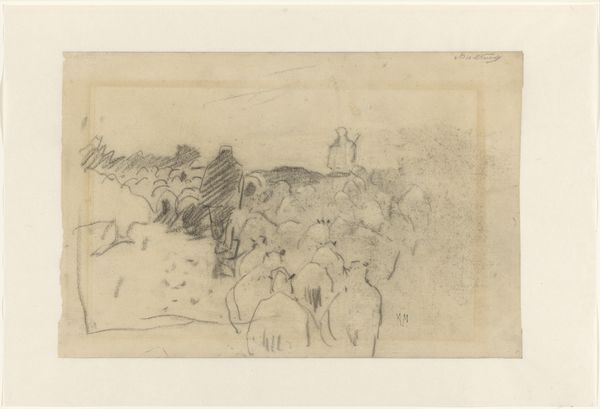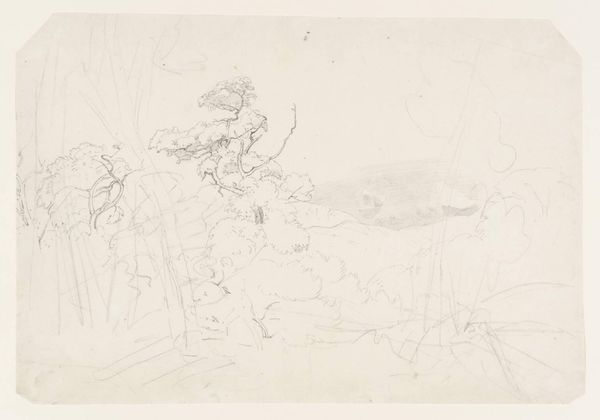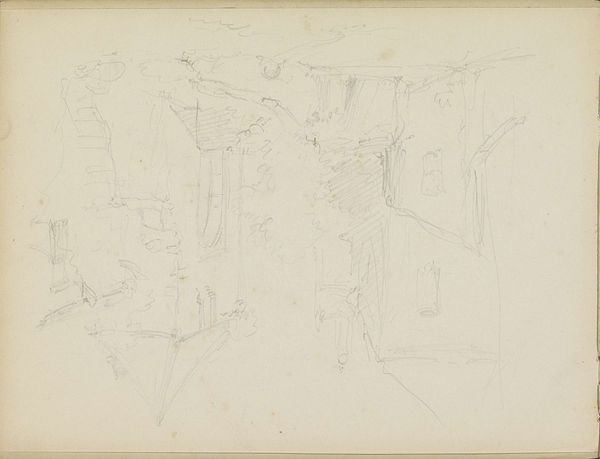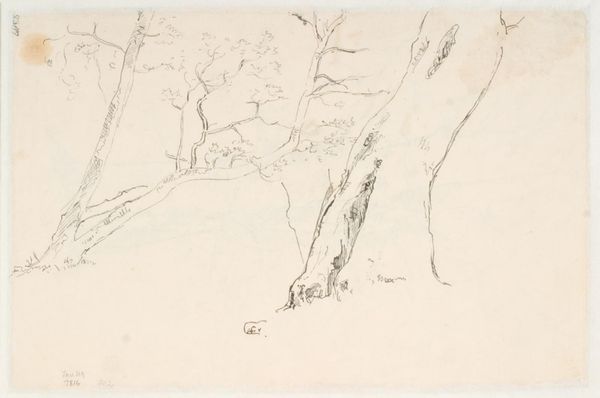
Copyright: Public Domain
Curator: This evocative pencil drawing, titled "Gesteinsbrocken am Frillensee," was rendered by Fritz Bamberger in July of 1854. What are your immediate thoughts? Editor: I'm struck by the way the pencil work almost vanishes into the page. It creates an atmosphere of quiet observation and impermanence. Curator: It’s interesting that you say that. In many ways, this work participates in broader conversations around Romanticism and the depiction of nature, though Bamberger isn’t as well-known as some of his contemporaries. One lens we might use is to examine the socio-political dimensions of the Romantic ideal in representing unspoiled nature. To what extent can we, or should we, consider this image as divorced from broader societal narratives of access and ownership? Editor: Those are compelling questions. For me, the image speaks more directly to an elemental, even spiritual response to landscape. The rough rocks are looming presences that possess their own inherent power. Water has long been a potent symbol, both life-giving and destructive; in the distance we have a tranquil lake, reflecting light from the open sky. It makes me consider the enduring significance of water in mythology and art. Is that reflection a pathway? A source of clarity? Curator: But whose pathways were being privileged during this period? While Bamberger is off capturing nature, the period's sociopolitical power structures determined whose relationship with that “nature” was promoted, whose labor was exploited for access, and whose land rights were ignored in the pursuit of these "natural" settings. I wonder about whose narrative isn't represented in the drawing itself? Editor: I grant your point, and that is relevant to this kind of art. Still, something primal resonates here. The simple materials—pencil and paper—echo the very earth depicted, creating a sense of connection between the artist, the medium, and the subject. I find meaning in that humility and the quiet veneration for nature that comes across. Curator: True, and it's always tricky to overlay contemporary awareness onto historical contexts without proper consideration. Editor: Indeed. But maybe the tension between the ideal of untamed beauty and its real-world context makes the drawing more poignant. It makes one reflect on time and change. Curator: Precisely. These considerations allow for deeper engagements. Editor: A fruitful discussion, I'd say.
Comments
No comments
Be the first to comment and join the conversation on the ultimate creative platform.
